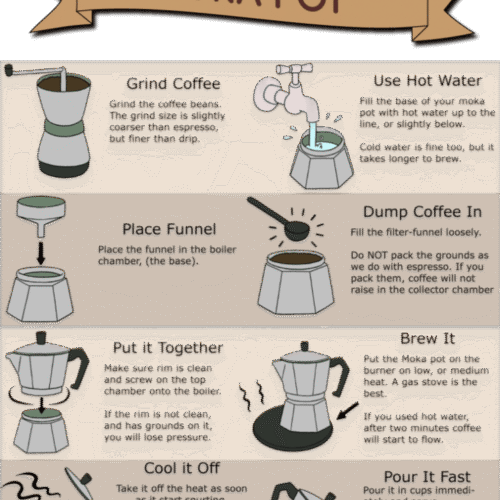Having problems with your Keurig coffee maker? Here are some quick fixes for common issues.
Whether it’s a clogged needle, slow brewing, or incomplete brewing, we’ve got you covered. A Keurig coffee maker is a convenient and popular choice for caffeine lovers. However, like any appliance, it can encounter problems from time to time. It can be frustrating when your morning cup of joe is disrupted by unexpected glitches.
If you’re wondering what’s causing your Keurig coffee maker to act up, look no further. In this guide, we’ll explore some common issues and provide simple solutions to get your machine back to brewing perfection. Whether it’s a clogged needle, slow brewing, or incomplete brewing, we’ve got you covered. Stick around and say goodbye to those Keurig coffee maker woes.
Common Keurig Coffee Maker Problems
Machine Won’t Turn On
If your Keurig coffee maker is refusing to turn on, it can be quite frustrating. This could be a result of electrical issues, an unplugged machine, or a malfunctioning power button.
Coffee Isn’t Brewing Properly
When your Keurig machine fails to brew coffee as expected, the quality of your morning cup can suffer. This problem may be due to clogged needles, scale buildup, or faulty brewing mechanisms.
Coffee Tastes Bad
Experiencing a less-than-perfect flavor in your Keurig-brewed coffee may signal brewing temperature problems, impurities in the water, or residue left behind by previous brews.
Leaking Or Dripping Issues
If you notice leaks or drips from your Keurig coffee maker, it might be due to a malfunctioning water reservoir, worn-out seals, or inadequately closed components.
Keurig Displays Error Messages
When your Keurig shows error messages, troubleshooting becomes essential. These messages could be indicative of descaling needs, software glitches, or internal malfunctions affecting the machine.
Troubleshooting Tips For Power Issues
Encountering power issues with your Keurig coffee maker? Troubleshoot with these helpful tips. Ensure the power cord is properly connected and try using a different outlet. If the issue persists, reach out to Keurig customer support for further assistance.
Checking Power Outlet And Cord
Firstly, ensure that the Keurig coffee maker is plugged into a functional power outlet. Check the cord for any visible damage or loose connections. If the outlet and cord appear to be in good condition, try plugging the coffee maker into a different outlet to rule out any issues with the power source.
Resetting The Keurig Coffee Maker
To reset the coffee maker, unplug it from the power source for at least a minute. Afterward, plug it back in and check if the power issue has been resolved. This simple reset can often fix minor electrical glitches and restore the coffee maker to full functionality.
Maintenance Of The Internal Heating Element
To ensure proper functionality of the internal heating element, regularly clean and descale the Keurig coffee maker as per the manufacturer’s instructions. Over time, mineral deposits can accumulate and impede the heating element’s performance, leading to power-related issues.
Keurig Not Brewing: Quick Fixes
When your Keurig coffee maker is not brewing, it can be frustrating, but most issues can be resolved quickly with some simple troubleshooting steps. In this section, we will outline some quick fixes to get your Keurig brewing again, covering cleaning and descaling the machine, inspecting the water reservoir, needle maintenance for proper flow, and examining the K-Cup Pod for issues.
Cleaning And Descaling The Machine
Regular cleaning and descaling are crucial for maintaining your Keurig coffee maker’s performance. Over time, mineral deposits can build up and clog the machine, leading to brewing issues. To address this:
- Unplug the machine: Before cleaning, always unplug your Keurig to ensure safety.
- Clean the exterior: Wipe down the machine with a damp cloth and mild detergent to remove any dirt or coffee residue.
- Descaling: Use a descaling solution or a mixture of vinegar and water to clean the internal components and remove mineral buildup. Follow the manufacturer’s instructions for descaling.
Inspecting The Water Reservoir
The water reservoir plays a critical role in the brewing process. Issues with the reservoir can prevent the Keurig from brewing. To ensure proper functionality:
- Check for debris: Inspect the water reservoir for any debris or foreign objects that may be blocking the flow of water.
- Reposition the reservoir: Ensure that the reservoir is properly seated in place and the seals are intact to prevent any leaks.
Needle Maintenance For Proper Flow
The needles in the Keurig are responsible for puncturing the K-Cup Pod and allowing water to flow through. If these needles become clogged or damaged, it can result in brewing issues. Here’s what you can do to maintain proper flow:
- Clean the needles: Use a paper clip or needle maintenance accessory to carefully clean out any coffee grounds or debris that may be blocking the needles.
- Run a water-only brew cycle: After cleaning the needles, run a water-only brew cycle to flush out any remaining residue and ensure clear passage for water.
Examining The K-cup Pod For Issues
The K-Cup Pod itself can sometimes be the cause of brewing problems. Ensure that the pod is in good condition and free from any defects or blockages:
- Check for clogs: Inspect the bottom and top of the K-Cup Pod for any clogs or obstructions that could hinder the brewing process.
- Verify compatibility: Ensure that the K-Cup Pod is compatible with your Keurig model and isn’t damaged or deformed, as this can affect the brewing process.
When Your Keurig Coffee Tastes Off
Experiencing a strange taste or off-flavor in your Keurig-brewed coffee can be a frustrating experience. Unpleasant aromas and flavors may range from a metallic or plastic taste to a sour or bitter note, leaving you wondering what’s causing the issue. The good news is that there are specific steps you can take to troubleshoot and resolve this problem.
Importance Of Water Quality
Water quality plays a crucial role in the flavor of your brewed coffee. Using filtered or distilled water can help eliminate any unwanted taste caused by impurities or mineral buildup. The purity of water directly impacts the final flavor of the coffee, so it’s essential to prioritize using high-quality water in your Keurig brewing process.
Cleaning The Coffee Maker’s Components
Regular cleaning of the coffee maker’s components is essential for ensuring that your Keurig brews consistently delicious coffee. Cleaning the brew basket, K-Cup holder, and water reservoir can prevent the accumulation of coffee residues, oils, and mineral deposits that can affect the taste of your coffee. Clean these components with mild soap and water regularly to maintain the optimal flavor profile of your brew.
The Influence Of Regular Descaling
Regular descaling is crucial for keeping your Keurig coffee maker in top condition. Over time, mineral deposits from water can build up inside the machine, leading to off-flavors in your brewed coffee. Descale your Keurig at recommended intervals using a descaling solution to remove these deposits and restore the machine’s performance, ensuring that your coffee maintains its intended flavor and aroma.
Dealing With Water Leaks And Drips
When it comes to Keurig coffee makers, dealing with water leaks and drips can be a common issue that users encounter. These problems can disrupt the brewing process and lead to a mess in your kitchen. Fortunately, there are steps you can take to troubleshoot and resolve these issues effectively.
Reservoir And Seal Inspection
One of the first areas to inspect when dealing with water leaks and drips is the reservoir and its seal. Over time, the seal can become worn or damaged, leading to leaks. To address this, carefully inspect the seal for any signs of damage or wear. If you notice any issues, you may need to replace the seal to prevent further leakage.
Troubleshooting The Drip Tray
Another potential source of water leaks and drips is the drip tray. If the drip tray is not positioned correctly or is clogged with coffee grounds and debris, it can cause overflow and leakage. To troubleshoot this, remove the drip tray and clean it thoroughly. Ensure that it is properly aligned and seated in place to prevent any leaks during the brewing process.
How To Handle A Clogged Water Line
If you are experiencing water leaks or drips that originate from the water line, it may be due to a clog in the system. To handle this, start by unplugging the coffee maker and removing the water reservoir. Next, carefully inspect the water line for any obstructions or debris. Use a small, flexible brush to gently remove any clogs, ensuring that the water line remains clear and free from blockages.

Credit: lifeboostcoffee.com
Keurig Coffee Maker Problems: Error Messages Decoded
Are you experiencing trouble with your Keurig coffee maker? Don’t worry, we’ve got you covered. In this post, we’ll decode the error messages you may come across while using your Keurig coffee maker, providing you with valuable insights on how to troubleshoot common issues and when to seek assistance from Keurig’s customer service team.
Understanding Common Keurig Error Codes
If your Keurig coffee maker displays an error message, it’s essential to understand what it means. Here are some of the most common error codes and their interpretations:
| Error Code | Interpretation |
|---|---|
| ERR1 | The water reservoir is not properly positioned. |
| ERR3 | The brewer needs to be descaled. |
| ERR5 | The water reservoir is not seated correctly. |
Steps For Resetting The Machine’s System
If you encounter an error code on your Keurig coffee maker, performing a system reset can often resolve the issue. Here’s how to reset your machine:
- Unplug the coffee maker from the power source.
- Wait for a few minutes before plugging it back in.
- Power on the machine and check if the error message persists.
In many cases, this simple reset can clear minor glitches and restore your Keurig coffee maker to proper functioning.
When To Contact Keurig Customer Service
If you have followed the troubleshooting steps and the error message persists, it may be time to reach out to Keurig’s customer service. The expert support team can provide further assistance and guidance in resolving the issue with your coffee maker.
Frequently Asked Questions On Keurig Coffee Maker Problems
Why Is My Keurig Coffee Maker Not Brewing?
There could be several reasons why your Keurig isn’t brewing, such as a clogged needle, mineral build-up, or a dirty water reservoir. Try descaling the machine and cleaning the needle to resolve the issue.
How Often Should I Descale My Keurig Coffee Maker?
To maintain optimal performance, it’s recommended to descale your Keurig coffee maker every 3-6 months. However, if you have hard water, descaling every 2-3 months is advisable to prevent mineral build-up.
What Should I Do If My Keurig Is Leaking Water?
If you notice water leaking from your Keurig, it may indicate a faulty seal, a cracked water reservoir, or a punctured hose. Check the components for any damage and consider replacing the affected parts to resolve the issue.
Conclusion
Being aware of common Keurig coffee maker problems allows you to troubleshoot and maintain your machine effectively. By understanding the potential issues and taking preventive measures, you can ensure a smooth brewing experience. Remember to regularly clean and descale your Keurig to keep it running optimally and enjoy delicious, hassle-free coffee every time.








